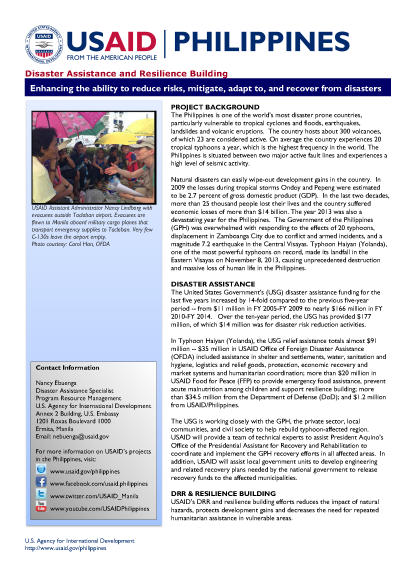The Philippines is one of the world’s most disaster prone countries, particularly vulnerable to tropical cyclones and floods, earthquakes, landslides and volcanic eruptions. The country hosts about 300 volcanoes, of which 23 are considered active. On average the country experiences 20 tropical typhoons a year, which is the highest frequency in the world. The Philippines is situated between two major active fault lines and experiences a high level of seismic activity.
Natural disasters can easily wipe-out development gains in the country. In 2009 the losses during tropical storms Ondoy and Pepeng were estimated to be 2.7 percent of gross domestic product (GDP). In the last two decades, more than 25 thousand people lost their lives and the country suffered economic losses of more than $14 billion. The year 2013 was also a devastating year for the Philippines. The Government of the Philippines (GPH) was overwhelmed with responding to the effects of 20 typhoons, displacement in Zamboanga City due to conflict and armed incidents, and a magnitude 7.2 earthquake in the Central Visayas. Typhoon Haiyan (Yolanda), one of the most powerful typhoons on record, made its landfall in the Eastern Visayas on November 8, 2013, causing unprecedented destruction and massive loss of human life in the Philippines.








Comment
Make a general inquiry or suggest an improvement.